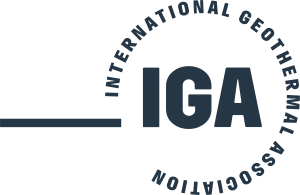Geothermal Heating & Cooling Data
Data Collection | Update for the World Geothermal Congress
February 2022 | International Geothermal Association
Authors: IGA Education & Information Committee, Chair – Adele Manzella
Margaret Krieger, IGA Associate Data & Policy Analyst
Overview
In January 2021 the International Geothermal Association (IGA) built a framework for geothermal data standards and methods to improve data collection and update the World Geothermal Congress (WGC) reporting. This work was led by the IGA Education and Information Committee with the goal to support the process of collecting, storing, and sharing coherent geothermal datasets.
In March 2021 two groups of experts were formed: one for geothermal power generation and one for geothermal heating and cooling. Each expert group had two sets of activities, categorized broadly as reviewing data standards and data management/analysis.
In November 2021 the work of the IGA experts was completed. Our results are revisions of power and heating and cooling dataset standards, including energy definitions, categories, direct use classification, and methods of data collection. These results are to be used as standards for the IGA data collection and for customized questionnaires for the World Geothermal Congresses Country Updates and proposed for reference to other organizations.
This report presents the updated heating & cooling dataset and results of the IGA Heat Expert Group.
Sector name and definition
The use of geothermal heat is often referred to as “direct use”. However, outside of the geothermal industry this name is not very common. Experts agreed on “Heating & Cooling” as the most appropriate name for this sector. Other considerations included “Thermal”, “Heat”, “Direct use”.
The choice was governed by audience awareness (applicable outside of geothermal industry), inclusivity (shallow and deep, low and high enthalpy, etc.), and comprehensiveness (including the use of geothermal heat pumps as a type of technology along with other types).
Heating and Cooling is defined as the use of thermal energy contained in the underground, or naturally rising at the ground surface, for any purpose other than electrical generation.
Heating & Cooling Dataset
The following dataset presents categories, their definitions and calculations methods for three datasets, namely geothermal field, application and technology.
One crucial characteristic of this dataset is the revised classification of application types of geothermal heating and cooling. It has been streamlined and now consists of five major uses of geothermal direct heat, namely (I) agriculture and food processing, (II) industrial process heat, (III) health, recreation and tourism, (IV) heating and cooling for buildings, and (V) other uses.
Another major revision concerned Geothermal Heat Pumps (GHP). Previously, GHP was a stand-alone category and reported as a type of application on par with greenhouse heating, bathing and swimming, etc. Experts agreed that GHP shall be treated as a type of installation as it is represented here with its own complete dataset.
Geothermal Field
| Heating & Cooling Categories | Definitions |
|---|---|
| Location: ● City ● Country | |
| Geothermal field name, if applicable (incl. previous field names) | Name of the geothermal field/reservoir as recognized by regulatory agencies (license, e.g.) or by its general use in the scientific/industrial literature. |
| Type of geothermal system ● Hot water system ● Other | The assumption is that any system reported here is a hot water system. If not, please choose “other” and type in the system. |
| Number of wells drilled over the reporting period: ● Exclusively for heating and cooling ● Combined heat and power | Only systems under operation are reported. Exploration wells or demonstration projects shall not be included here. |
| Average depth of wells under operation (m) | Average depth reflects the true vertical depth (TVD). Wells include boreholes and ground heat exchangers under operation. |
| Max. temperature of the fluid (°C) | The temperature of the fluid entering the thermal system. |
Geothermal Application
| Heating & Cooling Categories | Definitions |
|---|---|
| Agriculture and Food Processing: ● Greenhouse ● Aquaculture ● Food processing ● Beverage Processing ● Other | ● Greenhouse Flowers, plants, mushrooms, algae, hemp, vegetables and fruits ● Aquaculture ● Food Processing ● Beverage Processing ● Other |
| Industrial Process Heat: ● Wood and wood products ● Textile Manufacture ● Chemicals and pharmaceuticals ● Metal and mineral recovery ● Concrete Curing ● Rubber Vulcanization ● Other | ● Wood and wood products Pulp, paper, fiber, timber drying and processing ● Textile Manufacture ● Chemicals and pharmaceuticals ● Metal & minerals recovery ● Other |
| Health, Recreation & Tourism: ● Thermal spas ● Swimming and sport centers ● Other | ● Thermal spas Commercial thermal spa centers (ex. Blue Lagoon) ● Swimming and sport centers |
| Heating and Cooling for Buildings ● Heating service ● Cooling and dehumidification service ● Other | This type of application includes the use of air conditioning and hot water for commercial, residential and public buildings. Multiple choice of applications is possible here. |
| Other ● Snow melting ● Other | This type of application includes other uses of direct heat that cannot be attributed to any category above. |
Geothermal Technology
| Heating & Cooling Categories | Definitions |
|---|---|
| Geothermal Heat Pump (GHP) | The complete dataset for the GHP is currently revised by experts. |
| Heat Exchanger | Heat Exchanger dataset includes following values: ● Installed capacity gross, MWt (main heat exchanger) ● Energy produced, TJ/yr or GWh/yr (automatic conversion) ● Nominal inlet temperature of the primary section/loop, °C ● Nominal outlet temperature of the primary section/loop, °C |
| Direct use of the fluid | Direct use of the fluid dataset includes following values: ● Installed capacity gross, MWt ● Energy produced, TJ/yr or GWh/yr (automatic conversion) An example of application type is “Aquaculture”, or “Other (open field irrigation). |
| District heating and cooling | Defined as supply of geothermal energy through a pipe network to multiple buildings. District heating and cooling dataset includes following values: ● Number of terminals (heat delivery points) ● Installed capacity gross, MWt (referred only to the geothermal part) ● Energy used, TJ/yr or GWh/yr (automatic conversion) (referred only to the geothermal part) ● Nominal inlet temperature of the primary section/loop, °C ● Nominal outlet temperature of the primary section/loop, °C |
| Combined Heat Power (CHP) | Combined heat power dataset includes following values: ● Name of the plant ● Installed capacity gross, MWt ● Energy produced, TJ/yr or GWh/yr (automatic conversion) ● Nominal inlet temperature of the primary section/loop, °C ● Nominal outlet temperature of the primary section/loop, °C |
| Energy Storage ● UTES (underground thermal) ● BTES (borehole thermal) ● ATES (aquifer thermal) | The complete dataset for the energy storage is currently revised by experts. |
| Other | This category includes other types of technology that cannot be attributed to any category above. |
Heating & Cooling Experts
- Mar Alcazar, RIGS: Red Iberoamericana de Geotermia Somera
- Paolo Conti, University of Pisa
- Thomas Garabetian, EGEC
- Maria Guðmundsdóttir, Orkustofnun
- Marek Hajto, Polish Geothermal Society
- Martin van der Hout, Strategic Consultant to the IGA
- Katarzyna A. Kurek, Wageningen University and Research, Geotermia Mazowiecka S.A.
- Wietze Lise, Principal Consultant at MRC Turkey
- Jim Lovekin, GeothermEX
- Angela Prieto, Sigma Prima Geoengineering
Heating & Cooling Liaison
- Arlene Anderson, on behalf of the U.S. Department of Energy, Systems Analysis & Low-Temperature Geothermal Program



